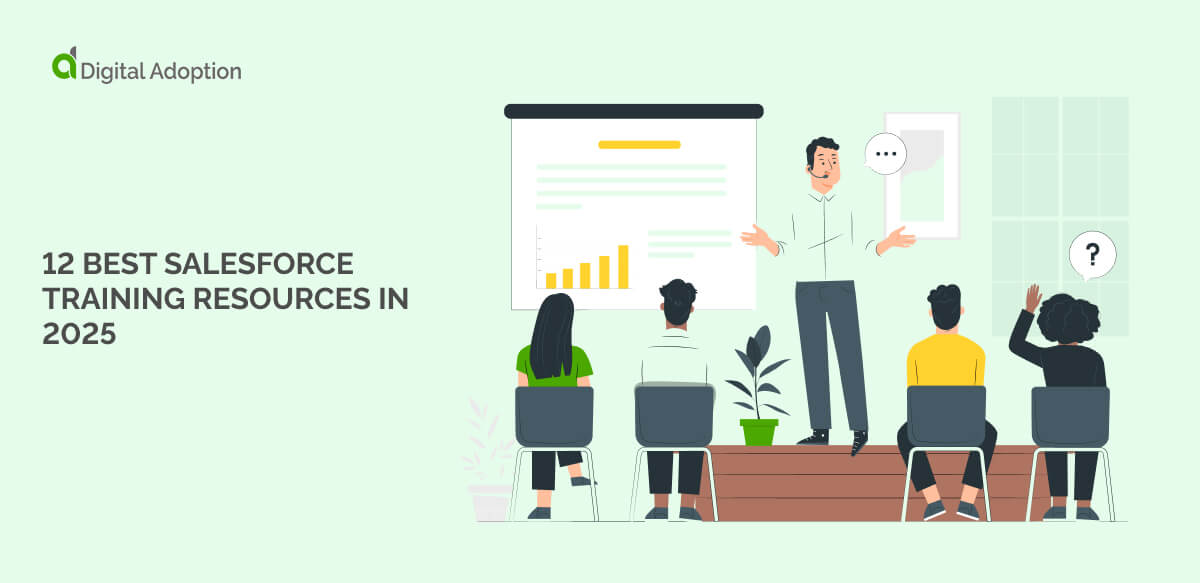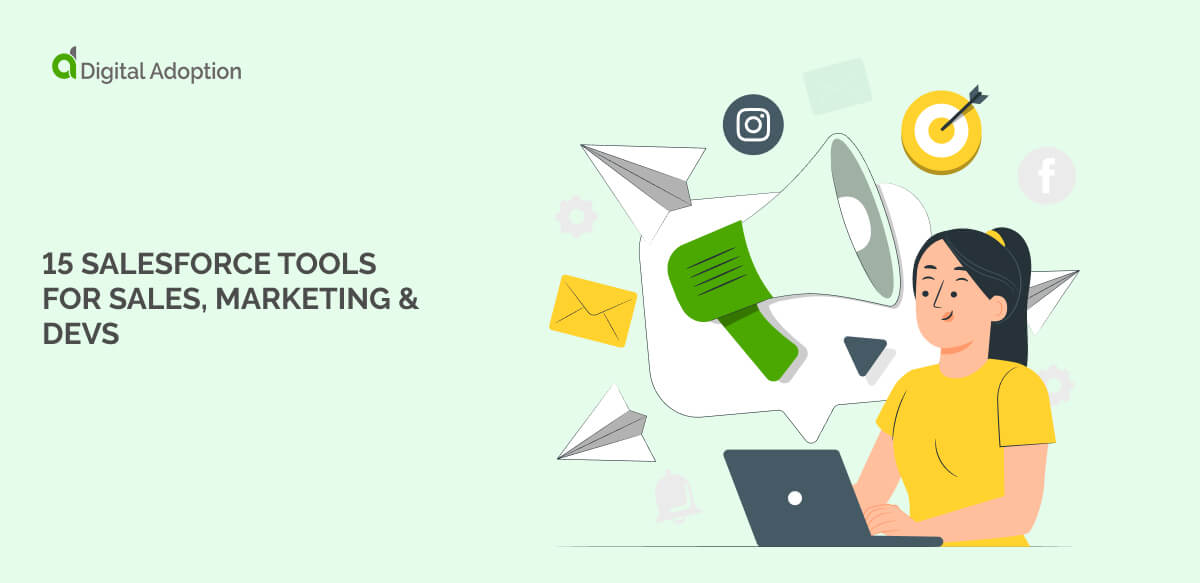In this article, we’ll explore the basics of digital adoption solutions – digital adoption solutions 101.
Namely, we’ll cover:
- What digital adoption is
- Why it’s a critical step in the digital transformation process
- What digital adoption solutions are
- Why digital adoption solutions are becoming more and more popular
To begin with, let’s look at digital adoption and digital transformation.
Digital Adoption Solutions 101: From Transformation to Adoption
Digital transformation is a common term being circulated today, across every industry and in every work environment.
At every level of the organization, we can already see the impact of digital transformation:
- Businesses are using technology to innovate, propel change, and fuel growth
- Job roles are shifting, requiring upskilling, reskilling, and training
- Workers are changing their attitude to work, embracing the idea of continual learning and career development
- New business models are emerging that are more efficient and cost-effective
- Organizations are becoming more open to technology and digital change
Every business is undergoing digital transformation, whether they know it or not.
New technology, from email to mobile phones, play a role in every business.
The more a company can make use of that technology, the more successful it will be.
In the digital age, after all, “digital” is not an option – it is a prerequisite.
Defining our terms will help us better understand the need for digital adoption solutions:
What is digital transformation?
Digital transformation refers to organizational changes spurred by technology.
More specifically:
- New technology inspires and fuels new innovation
- New innovations – in products, services, business processes, and so on – drive marketplace disruption
- That disruption compels widespread change
In other words, to keep up with disruption, companies must adapt.
Digital transformation is not restricted to technological change, however.
It can encompass:
- Technological innovation
- Cultural changes
- Organizational changes
- New business models
- Digital adoption
This last point is a fundamental step in any digital transformation process.
What is digital adoption?
Many companies think in terms of “technology adoption.”
They adopt, test, and deploy a new tool or technology.
However, there is a distinction between technology adoption and true digital adoption.
Digital adoption involves:
- Adopting and implementing a new tool, platform, or technology stack
- Onboarding and training new users
- Optimizing the technology to ensure maximum usage, productivity, and ROI
Implementing a new technology, in other words, is not enough.
If a business installs a new tool, but users are only partially productive, then ROI falls short.
Those lower metrics, in turn, hurt the organization’s bottom line.
Any digital transformation effort that wants to maximize its software ROI needs to:
- Train its users
- Proactively manage and maximize productivity
- Continually optimize the user experience and user engagement
In recent years, these tasks have become much easier, thanks to a new category of technology: digital adoption solutions.
What digital adoption solutions are – and why they are so valuable
An article in Computer World described WalkMe as “the most obvious tool in the world.”
The author says that “the idea struck me as so obvious that I’ve been a big fan ever since.”
WalkMe calls itself a digital adoption platform (a DAP for short).
In short, a digital adoption platform:
- Integrates with another application, such as a CRM platform
- Provides step-by-step guidance inside the application, teaching users how to perform tasks only when they need it
- Automates tedious, mundane tasks
- Offers analytics and insight into user behavior, identifying sticking points
WalkMe’s platform has been implemented by some of the world’s largest brands, from PayPal to Amazon.
This type of platform has become critical in today’s digitally transforming economy.
So much so, in fact, that Gartner even recognized a new technology category: digital adoption solutions.
Digital adoption solutions are becoming a critical component in today’s digital workplace, for a few reasons:
- Businesses implement complex technology stacks, even in roles that aren’t traditionally tech-focused
- Learning these technologies takes time, effort, and energy
- The effectiveness of training directly impacts user engagement, productivity, and performance
In short, digital skills are a must in the digital workplace.
However, in a world driven by continuous learning, old training methods can’t keep up.
To stay productive and maximize software ROI, many businesses are turning to digital adoption solutions.
In the coming years, Gartner expects digital adoption solutions to expand their market penetration even further.
Conclusion
Installing software – and then not using it – is akin to buying a car and letting it sit in the garage.
And then walking to work.
Instead of saving time and driving, you lose time, fail to recoup your investment, and become less productive.
Meanwhile, those around you (your competitors) are driving to work, being more productive, and keeping up with the modern times.
This analogy captures the essential need for digital adoption and digital adoption solutions.
If you don’t keep up with the technology race, you’ll fall behind those that do.







![18 Examples of AI in Finance [2025]](https://www.digital-adoption.com/wp-content/uploads/2025/06/18-Examples-of-AI-in-Finance-2025-300x146.jpg)
![14 Examples of AI in Manufacturing [2025]](https://www.digital-adoption.com/wp-content/uploads/2025/06/14-Examples-of-AI-in-Manufacturing-2025-300x146.jpg)




